Archive for April, 2018
Anniversary For Holden Maven Gig.
Imagine being able to trial a job for a month to decide if you liked the conditions, pay and hours, with so many new ways of working through the sharing economy, why shouldn’t this be possible? Holden agreed, so they launched Maven Gig, a car-sharing service that puts power into the hands of the driver.
Since launching a year ago, Maven Gig has achieved significant growth as more Australians turn to freelancing and the sharing economy to generate income and look for flexible ways to get on the road faster. As the personal mobility solution for members of the freelance economy celebrates its first anniversary, Maven Gig has reached a major milestone with its 1000th car hitting the road.
“We’ve seen massive changes to how our customers work and live, and we are embracing the challenge to offer the type of tailored experiences that people want and expect in every facet of their life. Maven Gig is just one way that we are creating new solutions that go beyond just a car, it gives people the power to choose how they want to drive and work,” said Matt Rattray-Wood, General Manager of Maven Australia.
“Freelance work and side hustles are becoming the norm as the public embrace new ways to work, and it’s incredibly exciting that as a car company we have the opportunity to be able to expand into this space. Maven Gig allows members to earn money and enjoy all the benefits of car ownership, all on their own terms.”
Maven Gig gives members access to a wide range of brand new or near new Holden vehicles such as the Trax, Astra hatch and sedan, and the seven seat Captiva. Drivers get unlimited kilometers, 24/7 roadside assistance, comprehensive car insurance and scheduled servicing all included in the rental cost. They can easily swap the vehicles depending on their work or needs.
Matt said the automotive industry was evolving at lightning speed and Holden and Maven intended to be at the forefront of this expanding market.
“With 1000 active members across Melbourne, Sydney, Brisbane and Adelaide, Australians are embracing this service and we are looking at new ways that we can expand our offering.”
“This first year has shown us that there is a strong appetite for our service in Australia, as we look to the future we are diving deeper into the sharing side of the business, exploring apps and what other opportunities there are to provide new mobility solutions for businesses and individuals.”
For more information click here Holden Maven Gig
With thanks to Holden Corporate Communications.
The Focus Is On The New From Ford.
Ford Australia will bring the most advanced, highly equipped and freshly styled Ford Focus to Australian customers in late 2018. The new German-made Ford Focus will bring the latest safety, technology, and European sophistication to more Australians looking for a dynamic and practical passenger car.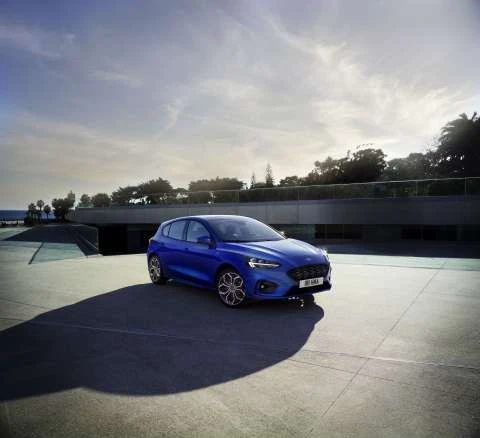 Ford Australia CEO and President, Graeme Whickman said: “We already enjoy highly-sophisticated and praised Fords from Europe, which include the current Focus ST and Focus RS models – now, our state of the art plant in Germany will be the single-source for the entire Focus range.”
Ford Australia CEO and President, Graeme Whickman said: “We already enjoy highly-sophisticated and praised Fords from Europe, which include the current Focus ST and Focus RS models – now, our state of the art plant in Germany will be the single-source for the entire Focus range.”
The first vehicle to be built on Ford’s clean-sheet C2 global platform, the new Ford Focus sports a sophisticated new chassis with advanced driving technologies with the goal of providing an energetic, engaging and rewarding fun-to-drive experience with increased cabin and powertrain refinement.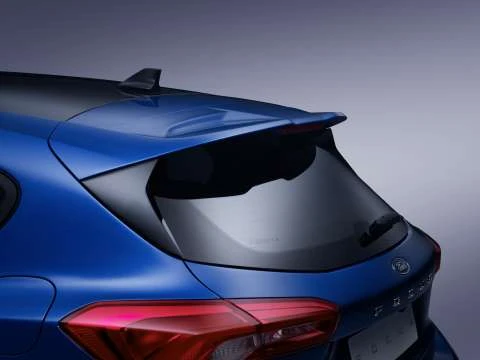 The all-new Ford Focus continues the tradition of being a groundbreaking, standard setting vehicle in terms of safety, technology and value for money by offering a host of advanced features in an stylish package. Focus will have Autonomous Emergency Braking with Night-time Pedestrian and Cyclist Detection as standard across the range. This technology is designed to detect people in or near the road ahead, or who may cross the vehicle’s path. The system automatically applies the brakes if it detects a potential collision and the driver does not respond to warnings; is now also designed to detect cyclists and functions in the dark using light from the headlamps.
The all-new Ford Focus continues the tradition of being a groundbreaking, standard setting vehicle in terms of safety, technology and value for money by offering a host of advanced features in an stylish package. Focus will have Autonomous Emergency Braking with Night-time Pedestrian and Cyclist Detection as standard across the range. This technology is designed to detect people in or near the road ahead, or who may cross the vehicle’s path. The system automatically applies the brakes if it detects a potential collision and the driver does not respond to warnings; is now also designed to detect cyclists and functions in the dark using light from the headlamps.
Focus will also come standard with a Rear wide-view camera, offering a near-180 degree view to the vehicle’s rear for improved visibility when reversing from parking spaces or driveways. Focus also introduces optional features previously only seen on high-end offerings, such as Adaptive Cruise Control (ACC) now enhanced with Stop & Go for effortlessly negotiating stop-start traffic. ACC with Stop & Go helps the Focus maintain a comfortable driving distance from vehicles ahead and adjusts the vehicle speed using information from the on-board navigation system or as it senses changes in traffic conditions. ACC works at speeds up to 200km/h.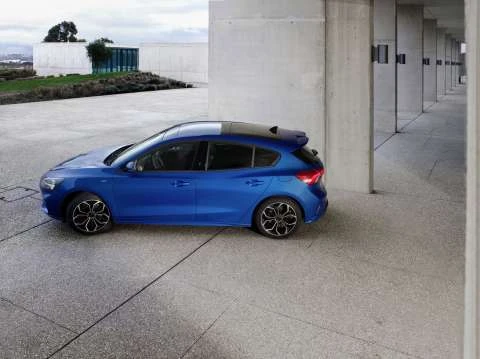 The new optional Stop & Go feature is designed to bring the vehicle to a complete halt when it detects stopped traffic using up to 50 per cent of total braking force, and automatically pull away if the stopping duration is less than three seconds. For stopping durations greater than this, the driver can push a steering wheel button or gently apply the accelerator to pull away.
The new optional Stop & Go feature is designed to bring the vehicle to a complete halt when it detects stopped traffic using up to 50 per cent of total braking force, and automatically pull away if the stopping duration is less than three seconds. For stopping durations greater than this, the driver can push a steering wheel button or gently apply the accelerator to pull away.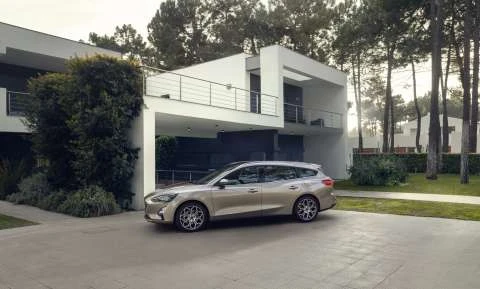 The Ford Focus will offer a choice of fuel efficient and advanced engines, as well as a new quick-shifting eight-speed torque-converter automatic transmission. Two engines will be the core of the Focus range; an entry-level 1.5-litre three-cylinder engine and a new 1.5-litre EcoBoost. The EcoBoost 1.5-litre is a turbocharged three-cylinder that develops high torque at low rpm for greater drivability, with advanced construction for improved efficiency. A combination of port fuel injection and direct fuel injection helps deliver high power and responsiveness alongside enhanced fuel-efficiency, with a particular increase in fuel-efficiency under light engine loads. This is further enhanced by Ford’s industry-first cylinder deactivation application for a three-cylinder powerplant.
The Ford Focus will offer a choice of fuel efficient and advanced engines, as well as a new quick-shifting eight-speed torque-converter automatic transmission. Two engines will be the core of the Focus range; an entry-level 1.5-litre three-cylinder engine and a new 1.5-litre EcoBoost. The EcoBoost 1.5-litre is a turbocharged three-cylinder that develops high torque at low rpm for greater drivability, with advanced construction for improved efficiency. A combination of port fuel injection and direct fuel injection helps deliver high power and responsiveness alongside enhanced fuel-efficiency, with a particular increase in fuel-efficiency under light engine loads. This is further enhanced by Ford’s industry-first cylinder deactivation application for a three-cylinder powerplant.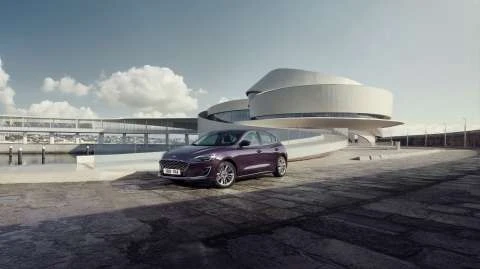 Mated to this engine is an intelligent eight-speed torque-convertor automatic transmission. This quick shifting and intuitive transmission features Adaptive Shift Scheduling (ASS). ASS identifies hard cornering, uphill and downhill gradients and adjusts the gearshifts accordingly, resulting in a more stable, engaging and refined driving experience.
Mated to this engine is an intelligent eight-speed torque-convertor automatic transmission. This quick shifting and intuitive transmission features Adaptive Shift Scheduling (ASS). ASS identifies hard cornering, uphill and downhill gradients and adjusts the gearshifts accordingly, resulting in a more stable, engaging and refined driving experience.
More details about the forthcoming Ford Focus including pricing will be released closer to the expected launch date.
With thanks to Ford Australia.
Private Fleet Car Review: 2018 Suzuki Swift Sport Manual and Auto.
Suzuki has had a long history with small hatches that have sporting pretensions. Every iteration of the Swift is warmly received, warmly reviewed and leads to high expectations for the next model. And so it was for the 2018 version. The 2018 Suzuki Swift Sport also…sports…a couple of noticeable changes.
 Suzuki have gone to their parts bin and slotted in their poky 1.4L BoosterJet four cylinder petrol engine. With 103kW and 230Nm it doesn’t sound like there’s a lot of oomph, but remember it is just 1400cc in size. There’s the added extra of a six speed auto to back up the venerable six speed manual. In a car weighing around the 1000kg mark the engine and transmission combination adds up to be a sparkling performer. At $25490 and $27490 plus ORCs it’s well priced and comes with a decent range of standard equipment as well.
Suzuki have gone to their parts bin and slotted in their poky 1.4L BoosterJet four cylinder petrol engine. With 103kW and 230Nm it doesn’t sound like there’s a lot of oomph, but remember it is just 1400cc in size. There’s the added extra of a six speed auto to back up the venerable six speed manual. In a car weighing around the 1000kg mark the engine and transmission combination adds up to be a sparkling performer. At $25490 and $27490 plus ORCs it’s well priced and comes with a decent range of standard equipment as well. The exterior of the Sport goes a step further than the already worked over Swift. There’s faux carbon fibre side skirts, a solid looking rear valance panel, and a jut jawed front end with more in your face attitude than the standard. Even the rear door handles are buried in radar absorbing black and mounted high in the C pillar. It’s about the same physical size as the previous model, with a total length of just 3890mm, width of 1735mm, and a petite 1495mm high, yet weighs less as well (970kg manual, 990kg auto). With a squat stance thanks to the low height and broad for its size track, the Swift Sport looks able to take on any tarmac surface.
The exterior of the Sport goes a step further than the already worked over Swift. There’s faux carbon fibre side skirts, a solid looking rear valance panel, and a jut jawed front end with more in your face attitude than the standard. Even the rear door handles are buried in radar absorbing black and mounted high in the C pillar. It’s about the same physical size as the previous model, with a total length of just 3890mm, width of 1735mm, and a petite 1495mm high, yet weighs less as well (970kg manual, 990kg auto). With a squat stance thanks to the low height and broad for its size track, the Swift Sport looks able to take on any tarmac surface.
 The Sport’s suspension is hard. Harder in the auto was the feeling, but not by much over the manual. It sometimes felt as if a rear corner was being raised when punted through some corners in both. However it also meant that on tight and twisting roads the Sport can be absolute thrown hard into them and will sit flat and confident.
The Sport’s suspension is hard. Harder in the auto was the feeling, but not by much over the manual. It sometimes felt as if a rear corner was being raised when punted through some corners in both. However it also meant that on tight and twisting roads the Sport can be absolute thrown hard into them and will sit flat and confident. The steering is an extension of the driver’s arms too, with instant response and the front tracking almost like a military helmet and nose-gun system. The superb 195/45/17 rubber contributes to that utter adhesion too. Brakes? Like the steering, they’re an extension. Think how much stopping you want, press, and receive.
The steering is an extension of the driver’s arms too, with instant response and the front tracking almost like a military helmet and nose-gun system. The superb 195/45/17 rubber contributes to that utter adhesion too. Brakes? Like the steering, they’re an extension. Think how much stopping you want, press, and receive. If there’s a weak link in the drive train it is, unusually, the manual. The clutch pedal feels too soft, with no real resistance, and the gear selector is the same. It’s rubbery, doesn’t feel as if the gate mechanism has the schnick schnick expected. Oh, it does the job well enough if it’s not rushed, as unhurried, fluid, motions will select the gear all the time, every time. It simply doesn’t feel sporty.
If there’s a weak link in the drive train it is, unusually, the manual. The clutch pedal feels too soft, with no real resistance, and the gear selector is the same. It’s rubbery, doesn’t feel as if the gate mechanism has the schnick schnick expected. Oh, it does the job well enough if it’s not rushed, as unhurried, fluid, motions will select the gear all the time, every time. It simply doesn’t feel sporty. The auto, gawd help me, is the complete opposite. Decisive, clear in its intent, assertive, smooth, and delivering on every promise, the auto is pretty much everything a driver of a sports oriented hatch could want. The gear selector has no manual option too, that’s left up to the steering column mounted paddle shifts. Power down, and it’s bam bam bam. Just beautiful.
The auto, gawd help me, is the complete opposite. Decisive, clear in its intent, assertive, smooth, and delivering on every promise, the auto is pretty much everything a driver of a sports oriented hatch could want. The gear selector has no manual option too, that’s left up to the steering column mounted paddle shifts. Power down, and it’s bam bam bam. Just beautiful.
 Inside there’s a pair of snug sports seats up front, standard seats at the rear, devil red trim contrasting with the charcoal interior plastic. The driver’s dash dials are a bronzed hue and glow a deep red at night. Smartly, for a right hand drive market, Suzuki have fitted the Start/Stop button up on the right side of the dash and in clear view of the driver’s eye. The touchscreen is standard and comes with Apple CarPlay and Android Auto.
Inside there’s a pair of snug sports seats up front, standard seats at the rear, devil red trim contrasting with the charcoal interior plastic. The driver’s dash dials are a bronzed hue and glow a deep red at night. Smartly, for a right hand drive market, Suzuki have fitted the Start/Stop button up on the right side of the dash and in clear view of the driver’s eye. The touchscreen is standard and comes with Apple CarPlay and Android Auto. Being a small car it’s no surprise the cargo space is on the petite side at 265L, and with the rear seats folded, increases to a more useful but not huge 579L. There’s small numbers for the engine, but good small. Although the fuel thimble is just 37L the consumption stretches that size. I finished on 5.9L/100 km, and that’s just about on the money from Suzuki’s quoted fuel figure of 6.1L/100km combined.
Being a small car it’s no surprise the cargo space is on the petite side at 265L, and with the rear seats folded, increases to a more useful but not huge 579L. There’s small numbers for the engine, but good small. Although the fuel thimble is just 37L the consumption stretches that size. I finished on 5.9L/100 km, and that’s just about on the money from Suzuki’s quoted fuel figure of 6.1L/100km combined.
 There’s a good safety package on board however there’s no driver’s kneebag, autonomous emergency braking, and NO parking sensors at all. Not a one. Nor is the Hill Start Assist in the manual yet the auto receives it. Ummm, ok then.
There’s a good safety package on board however there’s no driver’s kneebag, autonomous emergency braking, and NO parking sensors at all. Not a one. Nor is the Hill Start Assist in the manual yet the auto receives it. Ummm, ok then.
 At The End Of The Drive.
At The End Of The Drive.
It’s truly rare, as a supporter and firm believer of a non-self shifter, that I will prefer the auto option. But here, in the 2018 Suzuki Swift Sport, it’s a no brainer. 2018 Suzuki Swift Sport specs is where to find out more.
The Top Seven Things Autonomous Cars Can’t Handle
My last post had some rather grim news to do with autonomous cars (aka driverless cars) not quite doing what they are supposed to do. That was an example of things going badly wrong with the sensor systems that are supposed to make driverless cars so much safer and better than real live humans. However, on a slightly lighter note, there are quite a few things that most of us drivers handle sometimes daily without much fuss that send autonomous cars into a full-on wobbly.

#1. Kangaroos
OK, so the design teams working with Volvo’s autonomous cars in Sweden had it all sorted for the sort of large animals that are likely to hang around on roads in Scandinavia. The sensors can handle moose, elk and deer, detecting the beasties and stopping the car in time. However, it’s a different story down here in Australia. The system just can’t cope with kangaroos, which are large animals that we’re likely to get on country roads – they’re certainly the large animals involved in most animal-related crashes. You see, the system doesn’t see an animal, recognise it and estimate the distance and take appropriate action the way a human does. The system uses the ground as a reference point to estimate the distance between the animal and the machine… and roos don’t stay on the ground when they’re on the move. The sensors also have trouble recognizing a kangaroo as a kangaroo because from the perspective of a computer, a kangaroo in motion and a roo resting quietly beside the road are completely different shapes and look like totally different things. Then you’ve got the problem with roos that human drivers have to cope with: the fact that they can get a top speed of 70 km/h and can seemingly explode out of nowhere right into your path. If the roo has been behind a bush or something, then the sensors can’t see it and you can’t see it, so you’d better have roo bars fitted.
 #2 Car Washes
#2 Car Washes
Some people get a little bit phobic about those automated car washes, although others enjoy them. There’s always that little moment when you see the big whirling brushes descend and you hope like mad that the sensors telling them when to stop aren’t going to fail, crushing the top of your vehicle, shattering your windscreen and thrashing you with hundreds of little rubber whips. But what happens when an automatic car wash meets an autonomous car?
Well, an autonomous car can get into the car wash without any problems. However, the vigorous action of the washer plus all the soapy foam don’t agree well with the sensors, so getting out of the car wash and driving on may be another story. You see, the sensors have to be clear of any grime or debris to work properly and if there’s soap left on them, they can’t see. And there is soap left on them afterwards. At worst, the car wash knocks the sensors off or damages them, which makes for a very, very expensive fix.
You have to take your pick: is washing your car by hand every time worth the convenience of a car that drives itself?
 #3 Bad Weather
#3 Bad Weather
Self-driving tech works nicely in fine, sunny weather. However, put it in heavy rain, snow or ice and it throws a very, very big wobbly. Humans know – or ought to know – that when it’s raining, you take it nice and slow around the corners, watch out for pools of water that could get you aquaplaning and to keep the speed down. Now, you’d think that because we have rain-sensing wipers, an autonomous car should be able to recognise that it’s raining and adjust itself accordingly. Unfortunately, it can’t. It probably can’t tell the difference between a light shower and a tropical monsoon. Google hasn’t even put its self-driving cars through tests in heavy rains yet, but they already know that snow is a big problem for autonomous cars because they can’t see the road markings that help them stay in their lanes and get around corners. As for ice, they have problems detecting this as well. Even if humans have trouble spotting black ice and frost on the road, we know that on a nippy day when you have to put on a nice woolly jersey, there’s likely to be a bit of ice on that corner there where the trees cast a shadow on the road all day.
#4 Potholes
Apparently, the only holes in the road that a self-driving car can detect are the big ones made by your local road repair crew that have cones around them. The little blips that are hard on your tyres and suspension aren’t picked up – they are below the surface of the road and they’re not on any of the mapping systems that these cars use. So an autonomous car won’t dodge potholes. Ouch.
#5 Newly Altered Road Layouts
Self-driving cars, especially the ones being worked on by Google, rely on really good maps to know (a) where in the world they are and (b) what the road is supposed to look like. Don’t underestimate the latter bit – this is one way that driverless cars can pick obstacles: some systems scan the area around them and compare this with an image of what the road and its surroundings usually look like (letterboxes, lamp posts, etc.) and reacts accordingly. However, if they don’t have these detailed maps, then things get a bit fun. As happened recently in Arizona, if the local supermarket has decided to change the layout of the carpark with its entrances and exits, a driverless car might still think that the best way to get out is via what is now a new set of stairs. Self-drive vehicles also go to pieces with new subdivisions and places where massive road works and new road layouts are going on: drivers from Christchurch, New Zealand, report that your common or garden GPS throws a wobbly about all the new roads and other bits resulting from the post-earthquake reconstruction.
#6 Shared Areas
Shared areas – places where pedestrians can go on the road at the same time as cars – are touted as being a way forward for cities of the future. The trouble is that driverless cars are very rule-based, and when it comes to shared areas, there are no set rules. Each interaction between driver and pedestrian, or between driver and driver, is a new situation. Nobody’s got official right of way, so we use our social knowledge to ensure that everyone gets where they want to go without anyone getting hurt. A human driver can see that the pair of pedestrians chatting with coffee in hand staring at each other aren’t about to try crossing the road. A robot/computer/self-driving car just sees human shapes and can’t see what they’re doing or predict what they’re about to do. Similarly, there are tons and tons of ways that drivers and pedestrians go through the whole “After you” “No, after you,” exchange. How we conduct these wordless conversations can be anything from a large Italian-style gesticulation to a simple jerk of the head or a raised eyebrow. It involves hands, arms, heads, facial expressions and mouthing words on the part of both parties – or just the driver, if he/she spots a mum struggling with a pram and a cantankerous toddler plus a bunch of shopping bags. Our gestures and our decisions depend on how we’re feeling, our stress levels, the other party involved (the puzzled looking tourist versus the businessperson talking on the phone while striding forward in a rush versus the bunch of teenage girls fooling around). And in some places, a human driver can recognise a familiar face, stop, wind down the window and have a wee chat. And all these variables are simply too complex, too individual and too unpredictable to be programmed into a machine.
 #7 Pesky Human Beings
#7 Pesky Human Beings
As an old road safety campaign stated, humans are unpredictable (and so are some animals, like the idiot dogs who stand there all dopey in the middle of the road staring at you as you brake and yell at them). A computer system relies on the situations and courses of appropriate action that have been programmed into it. The trouble is that not everything that people do goes according to the rules – and don’t we just know it!
Here are a few examples of pesky human behaviours and situations – all of which a human driver can recognise and deal with – that would throw a driverless car:
- A cop on point duty directing traffic because of an accident on the road ahead or similar – a person standing there waving arms is not something a computer system is used to
- A ball bouncing out into the road: if a human sees this, he/she knows that some child might dash onto the road to retrieve it, but a computer sensor can’t tell a ball from a plastic bag flying loose and won’t react… it certainly won’t start keeping an extra look out for kids.
- Kids coming out from school: they’re supposed to be sensible on the roads and not do anything silly, but there’s that occasional child who rushes across the road shouting “Mummy!” unexpectedly. Most of us should know that one should slow down and keep an extra lookout at certain times around schools.
- Hitchhikers: We know what the backpack, the extended thumb and the cardboard sign reading “Gold Coast” means, and we can also make split-second decisions regarding how dodgy the hitchhiker looks, how much space we’ve got in the car, where we’re going and how urgent our journey is, and use all this to decide whether or not to pick up the hitchhiker.
- Situational ethics: it doesn’t happen very often, but what about when you’ve got a choice between two evils? This comes down to morals, ethics and the value of life. Sometimes, for a human, the choice is comparatively easy: in a choice between hitting Granny and hitting the stray dog, most of us would swerve to take the dog out. Similarly, if you have to negotiate a flock of sheep, the farmer and his/her sheepdog, we know that if things get really bad, you avoid the dog and the farmer at all costs but you can hit the sheep. At the moment, sensors have trouble getting beyond “Obstacle A” versus “Obstacle B”. Even if they can tell people from animals, can they go further? Can they distinguish one human from another? And if so, how do they decide who not to hit?